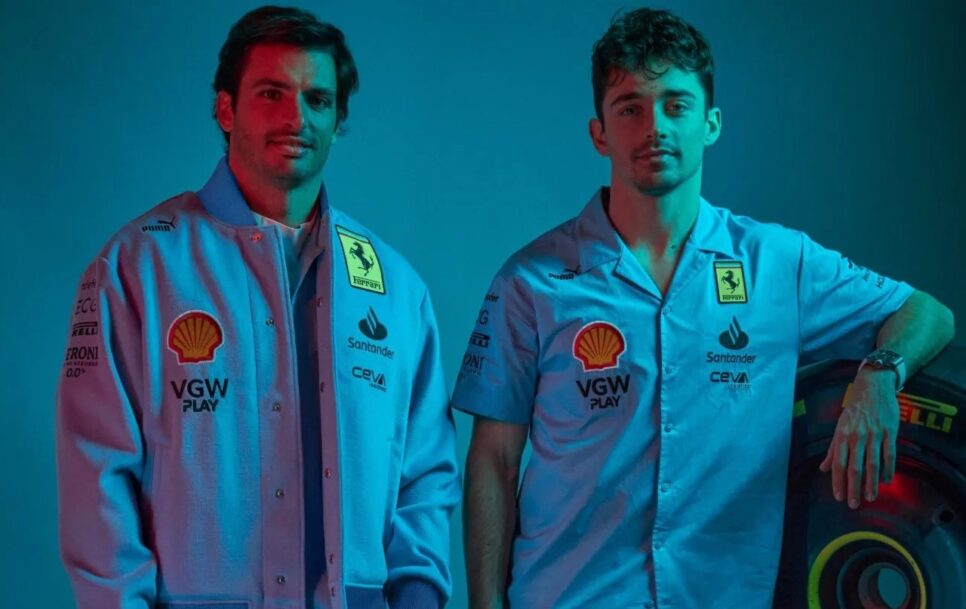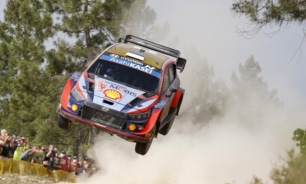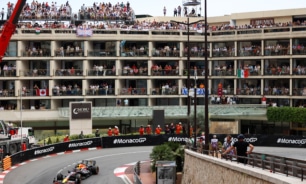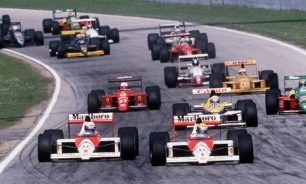Ferrari abandons red and goes blue in Miami. Why?
Ferrari and the color red, who can separate them? It turns out that Ferrari itself, because at the upcoming Miami GP, the Italian team will wear blue – and it’s their own decision.
Let it be clarified right away that this is not a belated April Fool’s joke, but the Ferrari F1 team really announced last week that it will come to the Miami GP with “fresh and unexpected colors”, which are Azzurro La Plata and Azzurro Dino, i.e. the light and dark blue.
The first of them, Azzurro La Plata, is a tribute to Alberto Ascari, who became the world champion with Ferrari in the 1950s and who wore a light blue overall and a helmet during races. The second one, Azzurro Dino, is more generally reminiscent of the early years of F1, when Ferrari drivers sometimes started with dark blue uniforms.
But why did Ferrari, which entered the racing world in red in the 1920s, turn blue? And why has red become synonymous with them? Olybet.TV dived into the world of colors to find out.
Alfa Romeo, strife and war
First, we have to go back almost a century, to 1929, when Enzo Ferrari founded Scuderia Ferrari. At that time, however, it was not a separate unit, but a team operating under the wing of Alfa Romeo.
However, this cooperation soon became futile, and in 1939, Mr. Ferrari decided to say farewell to the other decision-makers away and founded his own team. However, due to legal nuances, he could not give it the previous’ name, so at first, the new company’s name was Auto Avio Costruzioni. The first baby of their production line was the 815, which managed to participate in only one race before the outbreak of World War II.
During the war, the newly created Ferrari company turned its attention to the production of aircraft engines and other spare parts for the Italian army, which earned a nice penny. When the war ended, Enzo Ferrari decided to put the money he earned into racing.
Red was a must
In the meantime, he also cleared the situation regarding the name with Alfa Romeo, and in 1947 the first Ferrari racing car in history saw the light of day: the Ferrari 125 S, which was, of course, red. It is widely believed that it was simply Enzo Ferrari’s favorite color.
In fact, the car was red due to a certain rule. Namely, at that time – and until 1968 – there was a color code of the International Automobile Federation (FIA), which stated that every car must be the color of its country. And the colors were as follows: England – green, France – blue, Germany – silver/grey, Italy – red.
So even if Mr. Ferrari liked the color red – the real reason was in the rule book. When Ferrari started producing so-called street cars some time later, it was logical to paint them red as well, to echo the racing cars’ colors. Marketing ABC!
Now speaking of F1, the foundation of it was laid in 1950, and Scuderia Ferrari was also present. In red. As well as the rest of the Italian teams: Alfa Romeo SpA, Scuderia Ambrosiana, Officine Alfieri Maseratti and Scuderia Milano.
The blue Ferrari was seen immediately
However, already in the first season, the royal series also saw a blue Ferrari on the starting line. The Frenchman Raymond Sommer was the culprit, who borrowed the car from the Italians for the Monaco GP and then painted it in the colors of his motherland, France.
Repainting machines was not unusual back then. The later world champion Juan Manuel Fangio had also raced in his home country in the same winter, with a Ferrari 166, painted blue-yellow based on the blue and yellow flag of Argentina – the sun is yellow on the flag. This machine was raced in South America until 1952.
In the same year, another blue Ferrari was released in the F1. Frenchman Louis Rosier was the one who bought the machine from the Italians but then painted it over, racing under the Team Ecurie Rosier name. He did the same in the next season and the one after that, racing the blue Ferrari in a total of 17 stages.
However, at the USA GP, which ended the year 1959, it happened for the first time that the Ferrari team itself painted the car blue. While three of their drivers, Tony Brooks, Cliff Allison and Wolfgang von Trips, sat in the red car at the time, Phil Hill, who raced on the home track, was allowed to paint his car in blue. The „nose“ of the car was left white!
Legend has it that…
However, the most (in) famous blue Ferrari in history could be seen in 1964. However, to understand the context: it is said that Enzo Ferrari wanted to homologate his new 250 GTO machine in 1962, but was in trouble because he did not have the mandatory 100 examples to show.
Mr. Ferrari is said to have solved the matter by first inviting the FIA representatives to one of the garages to look at the machines, then asking them for the obligatory coffee. At that time the same machines were being delivered to another place – after which the same machines in the new location were visited and inspected by the clueless representatives. That’s how he got to about 100 in total and the permit was his.
It is not known whether this is true, but it is widely believed to be the reason why the FIA put a stop to their wish two years later when Ferrari wanted to homologate the 250 LMi.
This infuriated Mr. Ferrari, and the decision of the Italian Motor Sports Association (ACI) to side with FIA’s in the dispute further drove him mad. So he threw the team’s racing license on the table and promised never to race in red again.
Let’s remember that at that time the national color requirement was still in effect, which is why it was a very strong statement: in essence, Enzo Ferrari renounced the Italian state!
The first and last blue world champion
However, at the US GP that followed, which ended the year 1964, we saw what it was really about. Yes, de facto Scuderia Ferrari had really retired, but in fact John Surtees and teammate Lorenzo Bandini, who were fighting for the World Championship title, were still at the start with Ferrari 158s.
Simply under the name of the North American Racing Team, a subsidiary of Ferrari in the USA created six years earlier – racing in the color blue. Surtees finished second in the US GP, which was enough to become the individual world champion.
Thus, he became the first – and to this day the only – rider to be crowned a champion on both two and four wheels. And the only Ferrari driver to secure the World Championship title with a blue car.
Emphasis on the word “car” here, because other Ferrari men have actually raced (and won) in blue. For example, Alberto Ascari, crowned world champion in 1952 and 53, raced in only a light blue overall and helmet until his untimely death in 1955.
Why did he do that? Personal preference: the Italian considered light blue to be his lucky color. But it is also noteworthy that Ascari was extremely superstitious. He only raced under certain numbers, didn’t let anyone else touch his equipment bag, and never raced on the 26th of the month. Namely, his father died in an accident at the French Grand Prix held on July 26, 1925.
John Surtees, Chris Amon, Lorenzo Bandini, Chris Amon and Ludovico Scarfiotti also donned light blue uniforms in the following years, following Ascar’s example. In 1974, however, Niki Lauda and Clay Regazzoni raced in a dark shade of blue – they were also the last non-red Ferrari men.
Yellow and green can also be found in history
Next to the track, you could see non-red Ferrari men even in the 90s, as the fireproof overalls of the Italian team’s mechanics were yellow. But then it was decided to make the assistants red as well.
Of course, as far as yellow is concerned, yellow Ferrari cars have also been seen on the circuits. This was s far back as in the 1950-1960s, when lending cars was popular. The Brazilian Chico Landi, who raced in South America in the mandatory color of his homeland, did this for example.
In Europe, the yellow color was reserved for Belgium, and their most famous teams, Ecurie Nationale Belge and Ecurie Francorchamps, also painted their purchased Ferraris yellow. However, the only yellow Ferrari in the F1 series dates back to the 1961 Belgian GP, when Belgian Olivier Gendebien raced on his home track as a private driver.
Finally, something for hardcore formula fans. Before Vanwall’s team were crowned the first-ever F1 Constructors’ Cup winners in 1958, they competed in a series called Formula Libre, racing used and rebuilt Ferraris that were painted… green.









